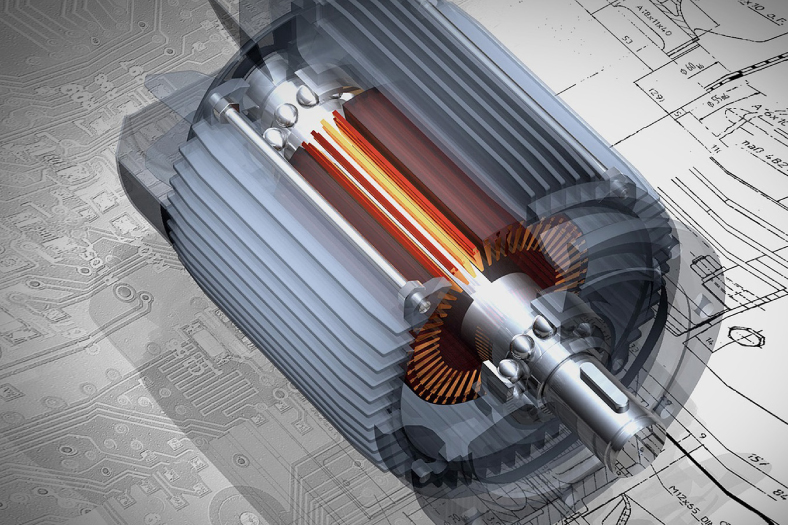Harmonising motor efficiency and maintence
By OEM Update Editorial May 10, 2019 3:16 pm IST
The search for ever increasing efficiency in motors brings the advent of newly emerging technologies. The newly emerging technologies are the squirrel-cage AC induction motors that use die cast copper rotors, permanent magnet (PM) motors, switched reluctance (SR), and synchronous reluctance (SynRM) motors. These can achieve efficiency levels that are significantly higher than premium efficiency induction motors.
• Copper rotor motor
Copper rotor motors offer improved efficiency, as rotor losses typically account for about 25 per cent of total motor losses.7-5resistance or I2R losses in the rotor conductor bars decrease because copper has a volumetric electrical conductivity about 66 per cent higher than that of aluminum. Reduced electrical losses translate into a reduction in the amount of thermal energy rejected into the motor enclo¬sure. A lower temperature means that a smaller cooling fan can be employed, resulting in reduced friction and wind¬age losses. 7-2 stray load losses are also exceedingly low for copper rotor motors
• Permanent magnet motor
Long used in servo motor applications, PM synchronous motors are increasingly used in industrial motor drive systems. PM motors use powerful ceramic or rare earth neodymium iron boron (NdFeB) magnets attached to the surface of the rotor or interior to the rotor to establish a permanent magnetic field. This design replaces the tra¬ditional aluminum rotor cage of the induction motor and significantly reduces the secondary circuit rotor I2R losses. The PM motor is designed for variable speed operation, and must be controlled by an inverter or variable speed drive that is specifically developed so the PM motor can start and achieve synchronisation properly.
• Switched reluctance motors
A switched reluctance motor (SRM) is a brushless DC electric motor that provides continuous torque. The SRM electronic drive is characterised (paired) to the motor; together, they form a very capable, closely matched system. The quantity and type of copper wire are very important in the design of a switched reluctance motor. SR systems manufactured today are well suited for industrial application and are viable alternatives to other variable speed systems.
IS 12615 was first published in 1989 with further revisions implemented in 2004, 2011 & 2018 to harmonise with the global standards and international best practices to include all the efficiency classes present for LT Motors. Year 2018 was a historical year for LT motor industry as with the Quality Control Order(QCO) released by Department of Industrial Policy & Promotion(DIPP), Effi-ciency class IE2 became Minimum Energy Performance Standard(MEPS) in India.
Mainly two types of maintenance are done in order to avoid unexpected downtime of motor systems: preventive and predictive maintence.Preventive maintenance can be referred to the schedule of planned maintenance actions (i.e. scheduled maintenance) aimed at the prevention of breakdowns and failures. Examples of protective maintenance are changing of oil, greasing, tightening of the belt, changing of filters, etc. While an effective predictive maintenance program is measured by how well it works to predict imminent failures and identify potential problem areas before they fail and create expensive recovery costs for an organisation. They should also work to determine the root causes of failures and, ultimately, save money by extending the service life of motors and rotating equipment. This also involves use of IOT to study various parameters and patterns of a working motor.
Authored by:
Abhishek Dhupar,
Manager–Motor & Motor Driven Systems,
ICA India
Cookie Consent
We use cookies to personalize your experience. By continuing to visit this website you agree to our Terms & Conditions, Privacy Policy and Cookie Policy.


















